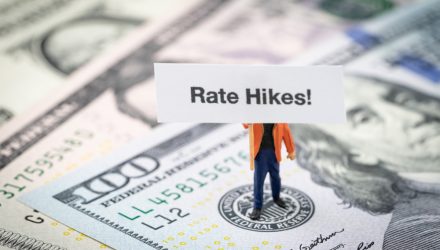Are markets now seeing rate hikes’ lagging impact finally start to pinch? While the economy has avoided the recession so many predicted starting the year, rate hikes have loomed. Historically, hikes’ impact on the economy has come via the slow metabolizing of rate hikes by the lending market. If that credit crunch starts to pinch this Fall amid a U.S. government shutdown and the return of student loan payments, an active ETF could make a solid add to advisors’ portfolios.
How do rising rates hit the real economy? U.S. consumers, of course, rely on loans to buy homes as well as cars. Rising rates have limited how far consumers’ dollars can go in doing so, thereby limiting their other spending. Whereas three years ago, the typical American needed 33 weeks of income to buy a new car, that number has grown to 42 per one analyst at Moody’s. With the Fed increasingly signaling not only a higher for longer rate regime but also even more hikes, that impact on lending may worsen.
See more: “Gen Z Clients: The Active ETF Investing Generation?”
Weakened lending, then, would impact the overall economy. Not only consumers but also businesses themselves rely on the ability to borrow at appealing rates. These effects can impact companies differently, so the need for strong security selection becomes amplified in such a fast-changing environment. Taken together, rising debt costs mean that advisors and investors may want to eye an active ETF that can be more choosy in seeking opportunities.
The T. Rowe Price U.S. Equity Research ETF (TSPA) presents one such option. As an active ETF, TSPA looks for long-term capital growth versus its benchmark, the S&P 500. TSPA looks to provide similar industry exposure as the S&P 500 but relies on security selection from specialized investment analysts driven by fundamental research. Most importantly, the portfolio can be far more adaptive than the static benchmark index.
That active adaptability could help TSPA compared to its passive peers. Passive strategies rely on investment committees to come together and act while tracking a staid index. Active managers, meanwhile, can apply specialized expertise and respond much more quickly than indexed ETFs. Charging only 34 basis points (bps), TSPA’s 15.4% YTD performance may make it one active ETF to watch.
For more news, information, and analysis, visit the Active ETF Channel.








